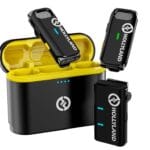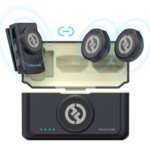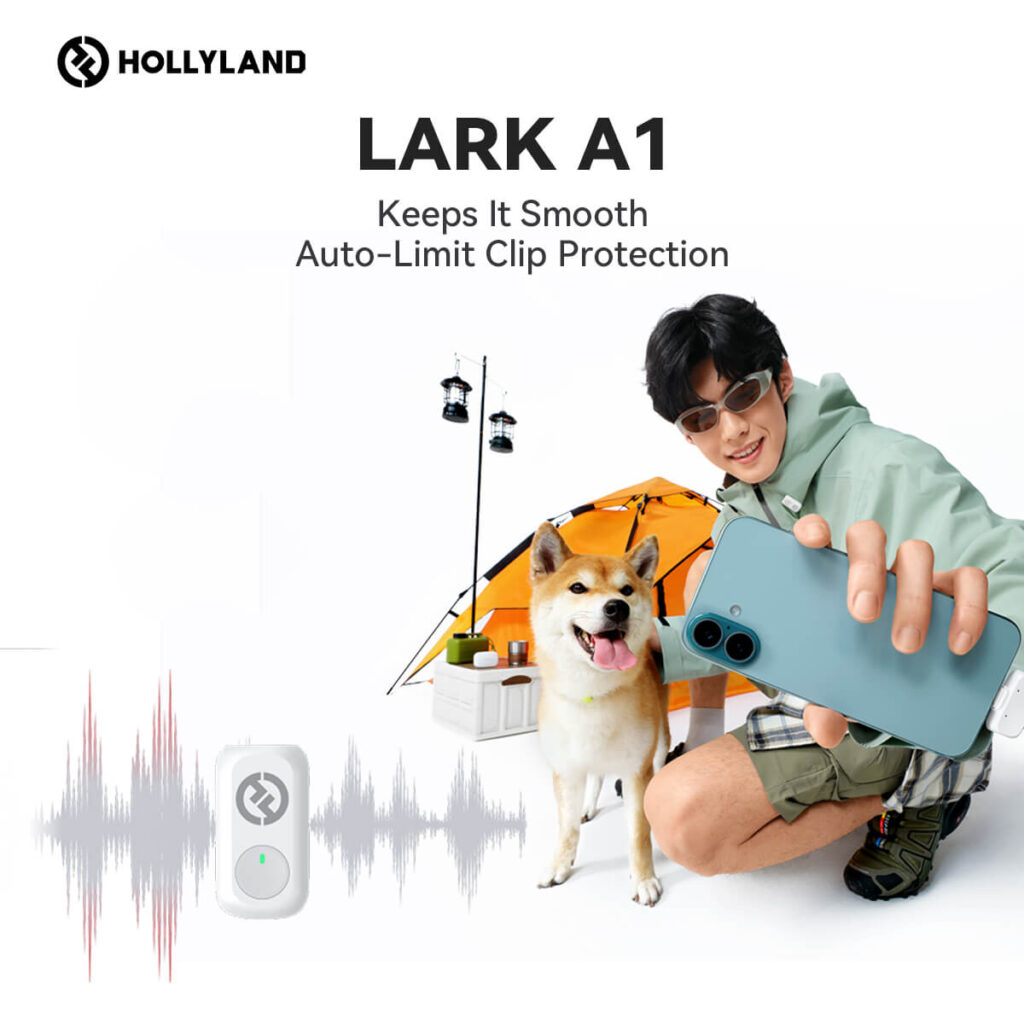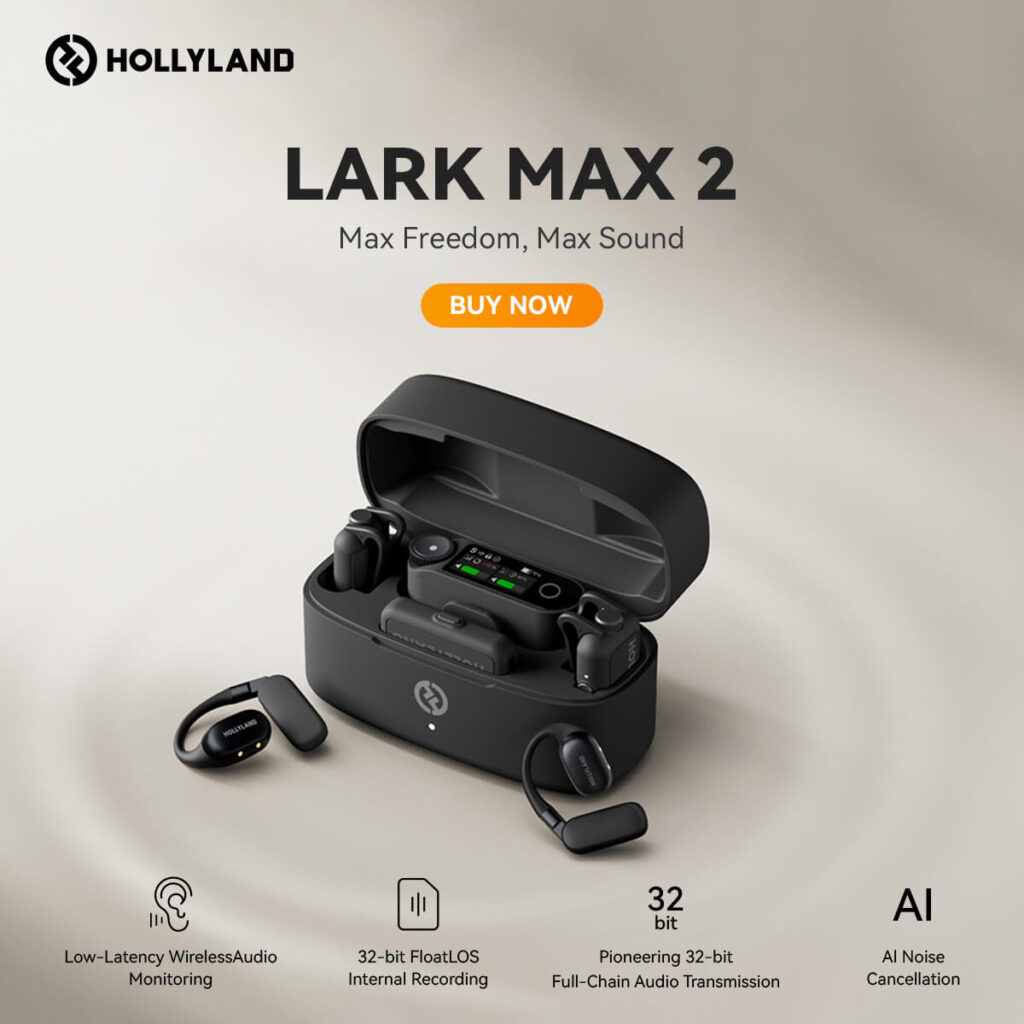What do you need a microphone for? Well, you need them to listen to your favorite guitar or your favorite podcaster. You can use it to simply hear your friend’s voice. Microphones are the magic that makes it happen! They’re like our ears to the world, turning those invisible sound waves into something we can record, share, and turn up loud.
However, the market is full of different models and that can definitely overwhelm you. Don’t panic because this article will guide you and help you find the best microphone with a stand. Below, you will find the best microphones according to budget along with their pros and cons. Shall we begin?
But before we find the best microphones with stands it is important to understand what a microphone is and its key components.
What is a Microphone?
A microphone is an important tool that converts sound waves into electrical signals. These signals can then be amplified, recorded, transmitted, or processed in various ways.
Key Components of a Microphone
- Diaphragm: A thin, sensitive membrane that vibrates in response to sound waves.
- Transducer: The element that converts the diaphragm’s vibrations into electrical signals.
- Housing: The casing that protects the internal components and provides a way to hold or mount the microphone.
Types of Microphones
There are two main types of microphones. Keep reading to understand about them in detail.
Dynamic Microphones

Working Principle
They function like miniature electromagnetic generators. A coil of wire connected to the diaphragm moves within a magnetic field. This movement induces a tiny electrical current that mirrors the original sound waves.
Characteristics
- Durable and rugged
- Can handle high sound pressure levels (loud sounds)
- Less sensitive than condenser mics, good for noisy environments
- Often have a warmer, less detailed sound
Best for:
- Live performances (vocals, instruments)
- Recording drums and loud amplifiers
- Broadcasting in less-than-ideal environments
Condenser Microphones

Working Principle
Based on the principle of a capacitor, condenser mics use a thin, electrically charged diaphragm positioned near a fixed backplate. Sound waves cause the distance between the diaphragm and backplate to fluctuate, changing the capacitance and generating an electrical signal.
Characteristics:
- Highly sensitive and detailed
- Capture a wider frequency range
- Require phantom power (usually from an audio interface or mixer)
- More fragile than dynamic mics
Best for:
- Studio recording (vocals, acoustic instruments)
- Capturing nuanced sounds and subtle details
- Applications where a quiet noise floor is important
The Best Microphone With Stand Options
We have divided this into several categories based on budget.
Best Budget-Friendly Options
The top two microphones with stand are:
Samson Q1U Dynamic USB Microphone with Desktop Stand
It is a unique microphone that offers both USB and XLR connectivity for maximum flexibility. The best thing about Samson Q1U is that it comes with a compact desktop tripod stand, a mic clip, necessary cables, and a basic pop filter. It is known for its affordability, durability, and decent sound quality.

Key Features
- Unique capsule: It can handle loud sound sources well, minimizes background noise, and is less sensitive than condenser mics.
- Cardioid polar pattern: Another important thing is that it focuses on the sound in front of the mic. Moreover, that reduces pickup from the sides and rear.
- Hybrid Connectivity:
- USB: You’d be relieved to know that plug-and-play is easy for computers and it is great for podcasting, streaming, and home recording.
- XLR: Infact, it connects to traditional audio interfaces or mixers for professional applications.
- Built-in Headphone Jack: With this, you can directly monitor your audio with zero delay.
- Onboard Controls: Mute button and headphone volume for convenience.
Ideal Uses
- Podcasting: Durable and easy to set up, great for capturing clear vocals.
- Voiceovers: Solid vocal reproduction for narration and similar work.
- Live streaming: Can handle the volume of excited voices and gaming sessions.
- Recording Instruments: Works well on guitar amps, drums, and other loud sources.
- Field Recording: XLR connection makes it adaptable for on-the-go recording setups
Pros
- Versatility: USB and XLR options open up a wide range of uses.
- Durable construction: Solid build quality for the price.
- Budget-friendly: Offers good bang for your buck.
- Easy to use: Simple controls and setup, even for beginners.
Cons
- Not the most detailed: Lacks the high-end sparkle and nuance of pricier condenser mics.
- The desktop stand is basic: You may need to upgrade to a boom stand for more flexible positioning.
- It requires an audio interface for XLR: This will be an added cost if you don’t already own one.
Who is the Samson Q2U Right For?
Budget-conscious content creators who need a straightforward, good-sounding mic. Anyone desiring flexibility between USB for simple setups and XLR for more advanced needs. Live streamers or musicians who value a microphone that can handle volume.
Audio-Technica AT2020 Cardioid Condenser Microphone with Boom Stand
AT2020 is a popular entry-level condenser microphone known for its detailed sound and solid build quality. Boasts a cardioid polar pattern, focusing on capturing the sound source in front of it. Typically bundled with a shock mount and a boom stand for flexible positioning. Requires phantom power, which needs to be supplied by an audio interface or compatible mixer.

Key Features
- Condenser Capsule: Offers sensitivity, detail, and wider frequency response compared to many dynamic mics.
- Cardioid Polar Pattern: Excellent for isolating vocals or instruments while reducing unwanted room noise.
- Low Noise Floor: Delivers clean recordings with minimal background hiss.
- Wide Frequency Response: Holds a broad range of sounds accurately, reproducing both lows and highs faithfully.
- High SPL Handling: Can work with louder sources like drums or guitar amps without distorting.
Ideal Uses
- Studio Vocals: A classic choice for capturing clear, nuanced vocal recordings.
- Acoustic Instruments: Its detail and frequency response shine on acoustic guitar, strings, piano, and more.
- Voiceovers: Delivers warm and articulate voice recordings.
- Podcasting: Steps up the audio quality for podcasts with a more professional feel.
- Home Recording Enthusiasts: A great way to enter the world of condenser mics without breaking the bank.
Pros
- Exceptional value: Delivers studio-quality sound at a very accessible price point.
- Versatile: Works well on a range of sound sources.
- Build quality: Feels solid and reliable.
- Included boom stand: Offers flexible placement options right out of the box.
Cons
- Requires Phantom Power: Needs an audio interface or mixer – an additional investment if you don’t own one.
- Less Forgiving Than Dynamics: Will pick up more background noise in untreated rooms.
- May Sound Thin Without EQ: Some users find it needs a slight boost in the highs for optimal vocal presence.
Who is the Audio-Technica AT2020 Right For?
- Home studio owners are looking to upgrade their recording quality.
- Vocalists and musicians are seeking a detailed, articulate microphone.
- Podcasters want to step beyond simple USB microphone options.
Best Mid-Range Choices
Shure SM58 Vocal Microphone with Floor Stand
Let’s delve into the Shure SM58, the industry-standard workhorse for live vocals:
What is the Shure SM58?
Shure SM58 is a legendary dynamic vocal microphone renowned for its reliability, clarity, and ability to withstand the rigors of the stage. Features a cardioid polar pattern to isolate the sound source in front of the mic. A staple of rock stars, broadcasters, and countless stages for decades.

Key Features
- Dynamic Capsule: Handles high sound pressure levels (think loud vocals or instruments) and reduces background noise.
- Cardioid Polar Pattern: Focuses on your voice while minimizing unwanted bleed from other stage sound sources.
- Tailored Frequency Response: Sculpted to emphasize vocal clarity and intelligibility within a loud mix.
- Durable Construction: The “tank” of microphones, built to survive drops, sweat, and countless gigs.
- Internal Shock Mount: Reduces handling noise when moved around.
- Built-in Pop Filter: Minimizes those harsh “P” and “B” sounds.
Ideal Uses
- Live Vocals: Its sonic character and durability make it THE stage vocal mic.
- Loud Instruments: Works well on guitar amps, snare drums, and other rowdy sound sources.
- Broadcasting: Handles speech clearly in less-than-ideal environments.
- Rehearsals: Affordable and sturdy enough to be your go-to rehearsal room workhorse.
Pros
- Road-Tested: Decades of proven reliability under the harshest conditions
- Predictable Sound: Audio engineers know what to expect, making it easy to work with.
- Cuts Through the Mix: Vocal-focused frequency response helps your voice shine through.
- Affordable: Offers great value for a professional-grade tool.
Cons
- Not the most “exciting”: Might lack the finesse of high-end studio condensers.
- Handling Noise: While minimized, it’s still a dynamic mic, so proper technique matters.
- Requires a Floor Stand: Often sold without one, so factor in the extra cost.
Who is the Shure SM58 Right For?
- Vocalists who need a dependable microphone that delivers night after night.
- Live sound engineers seeking a no-nonsense mic that does its job well.
- Anyone who subjects their gear to rough handling or unpredictable environments.
- Musicians on a budget who want a legendary mic without breaking the bank.
Blue Yeti USB Microphone with Desktop Stand
Blue Yeti is a versatile USB condenser microphone with a recognizable design and multiple polar patterns. Comes with a built-in desktop stand for easy setup. Known for its user-friendliness and plug-and-play capabilities.

Key Features
- USB Connectivity: No audio interface needed – simply plug it into your computer and start recording.
- Multiple Polar Patterns: Cardioid, omnidirectional, stereo, and figure-8 patterns provide flexibility for different recording scenarios.
- Built-in Headphone Jack: Allows for direct, zero-latency monitoring of your voice or recordings.
- Onboard Controls: Gain and pattern selection knobs, headphone volume, and a convenient mute button.
- Desktop Stand: Offers stable positioning with adjustable angles.
Ideal Uses:
- Podcasting: Cardioid mode is perfect for voice recording, and multiple patterns allow for interviews or co-hosts.
- Streaming: Delivers solid audio quality to elevate your online presence.
- Voiceovers: Clear vocal recording for narration or online courses.
- Home Music Recording: Can capture vocals and acoustic instruments decently.
- Conference Calls: Omnidirectional mode works well for group calls.
Pros
- Easy to Use: Plug-and-play simplicity, ideal for beginners.
- Versatile Patterns: Adapts to different recording situations.
- Good Sound Quality for the Category: Solid for spoken word and basic music recording.
- Zero-latency Monitoring: Hear yourself in real-time for better takes.
Cons
- Sensitive: As a condenser, it picks up background noise more readily than dynamic mics.
- Desktop Stand May be Limiting: Lacks the flexibility of boom arms for precise positioning.
- Prone to Plosives: Built-in pop filter is basic; might need a better one for clearer vocals.
- Not the Most Detailed: Can sound somewhat boxy compared to pricier studio mics.
Who is the Blue Yeti Right For?
- Content developers who prioritize ease of use and decent audio quality in one package.
- Podcasters wanting flexibility for solo or multi-person recordings.
- Beginners entering the world of audio recording without breaking the bank.
- Those without audio interface access who need a simple USB solution.
Best High-End Investments
Rode NT1-A Cardioid Condenser Microphone with Boom Stand
This one is a cardioid condenser microphone celebrated for its clear, detailed sound, low noise floor, and overall value proposition. Frequently bundled with a shock mount, pop filter, studio-grade boom stand, and necessary cables. A common sight in home studios and professional vocal booths.

Key Features
- Large-Diaphragm Condenser Capsule: Offers sensitivity, detail, and a wide frequency response for accurate sound reproduction.
- Cardioid Polar Pattern: Concentrates on the sound source in front, minimizing unwanted room ambiance and background noise.
- Exceptionally Low Noise: Delivers clean recordings without intrusive hiss.
- Wide Frequency Response: Captures a full spectrum of frequencies, ideal for detailed vocal and instrument recordings.
- High SPL Handling: Can cope with loud sound sources without distortion.
Ideal Uses
- Studio Vocals: A go-to choice for capturing nuanced, professional-quality vocal performances.
- Acoustic Instruments: Excels on acoustic guitars, pianos, strings, and other instruments where detail matters.
- Voice-overs: Delivers a rich, full sound for narration and voice-acting work.
- Serious Home Recording: A smart investment for anyone seeking higher-fidelity recordings.
Pros
- Impressive Detail and Clarity: Reveals nuances in vocals and instruments that many entry-level mics miss.
- Quiet Preamplifiers: Essential for pristine recordings, especially in untreated rooms.
- Complete Bundle: Often includes a high-quality shock mount, pop filter, and boom stand for a full setup.
- Solid Build Quality: Feels sturdy and reliable.
- Good Value: Delivers studio-level performance at a competitive price
Cons
- Requires Phantom Power: Needs an audio interface or compatible mixer to operate.
- Sensitive: Reveals room imperfections, so acoustic treatment becomes more important.
- Can Sound Bright: May require some EQ to tame excessive highs for certain voices or instruments.
Who is the Rode NT1-A Right For?
- Vocalists and musicians seeking a significant upgrade to their recording quality.
- Home studio owners want a highly versatile condenser mic.
- Anyone desiring professional-sounding results without a professional studio budget.
Shure SM7B Dynamic Broadcast Microphone with Boom Stand
Shure SM7B is a dynamic broadcast microphone with a cardioid polar pattern, known for its rich, articulate sound and excellent background noise rejection. Became popularized by Michael Jackson’s use on “Thriller,” and is now a standard in professional studios. Often bundled with a boom stand for flexible placement options.

Key Features
- Dynamic Capsule: Manages high sound pressure levels, making it great for loud vocals and close-miked instruments.
- Cardioid Polar Pattern: Focuses tightly on the source in front of it, minimizing room noise.
- Smooth, Rich Frequency Response: Flattering to voices, adds warmth and body.
- Bass Roll-Off and Presence Boost Controls: Tailors the sound for different applications.
- Internal Shock Mount and Pop Filter: Minimizes handling noise and harsh vocal plosives.
Ideal Uses
- Vocals (Broadcast & Studio): Delivers articulate speech and vocals with a broadcast-ready richness.
- Podcasting: Excellent at isolating the voice in varied recording environments.
- Loud Instruments: Works well on drums (especially snare), electric guitar amps, and brass.
- Streaming: Elevates audio quality, reduces background noise for clean streams.
Pros
- Focused and Articulate: Your voice cuts through with clarity even in noisy settings.
- Forgiving Proximity Effect: Get close to the mic for that deep “radio voice” without muddiness.
- Controls for Customization: Tweak the low-end and presence boost to fit different voices.
- Durable Construction: Made to withstand the demands of daily use.
Cons
- Requires Significant Gain: Needs a powerful preamp or a device like a Cloudlifter to reach optimal levels.
- Technique Matters: Proper distance and speaking angle greatly affect the sound.
- May Need Extensive EQ: Sometimes requires additional processing to achieve the desired brightness for some users.
- Cost: A premium investment compared to many dynamic mics.
Who is the Shure SM7B Right For?
- Podcasters who want a professional, articulate voice sound and noise reduction.
- Vocalists seek a unique character with warmth and presence.
- Anyone recording in less-than-ideal acoustic environments.
- Musicians who need a versatile mic for loud sources.
Hollyland Microphones
Let’s explore some great options for using Hollyland microphones with stands:
Hollyland Lark M1/M2 with Lavalier Mic Stand
Setup: Attach the Hollyland wireless receiver to your camera or smartphone. Connect a lavalier mic (either from Hollyland or a compatible third-party lav) to the receiver. Use a small desktop tripod with a phone/camera mount to act as your stand.

Pros: Portable, flexible placement, great for sit-down interviews or desktop vlogging.

Wireless Lavalier Microphone with High-Quality Audio.
Hollyland Lark M1/M2 with Boom Arm Stand
Setup: Attach the Hollyland Lark M1 wireless receiver to your camera or smartphone. Position the receiver unit close to the top of a boom arm stand for maximum range.

Pros: Excellent for overhead shots, adjustable height and reach, perfect for capturing multiple people or dynamic scenes without having to reposition a smaller stand.

2-Person Wireless Mini Button Microphone.
Key Considerations Before You Buy
Let’s break down the key considerations you need to think about before investing in a microphone:
Intended Applications:
Live Performance
Priorities:
- Durability: Microphones need to withstand the rigors of the stage, potential drops, and constant handling.
- Feedback rejection: Minimizing unwanted feedback from loudspeakers is crucial.
- Handling noise: Reducing the sound of the microphone being moved around in the performer’s hand.
- Vocal-focused: For vocals, clarity and intelligibility are often favored over a perfectly “natural” sound.
Microphone Choices:
- Dynamic microphones: Their ruggedness and ability to handle high sound pressure levels make them the workhorses of live sound.
- Cardioid polar pattern: Helps isolate the vocals and reduce bleed from stage monitors and other instruments.
Studio Recording
Priorities:
- Sensitivity and detail: Capturing every nuance of a performance.
- Wide frequency response: Reproducing the full range of human hearing and beyond for accurate representation of instruments and vocals.
- Low noise floor: A quiet microphone is essential for pristine recordings.
Microphone Choices:
- Condenser microphones: Excel in sensitivity and detail, making them the studio favorites.
- Varied polar patterns: Cardioid is standard but omnidirectional, and Figure 8 offers flexibility for different recording techniques.
Podcasting and Voiceovers
Priorities:
- Vocal clarity and warmth: The spoken word needs to be intelligible and engaging.
- Ease of use: Often favored by solo creators who value a straightforward setup.
- Noise rejection: To minimize the pickup of background sounds in home environments.
Microphone Choices:
- USB condenser mics: Offer plug-and-play simplicity and decent sound quality.
- Dynamic broadcast mics: Classic radio sound, great at rejecting background noise (think the iconic Shure SM7B).
- Cardioid or supercardioid patterns: Focus on voice while minimizing room noise.
Instrument Recording
Priorities:
- Matching the mic to the instrument: Different mics excel at capturing the unique characteristics of various instruments.
- Frequency response: This should be tailored to the instrument’s frequency range (e.g., a kick drum needs a low-end response).
- Sound Pressure Level (SPL) handling: Some instruments, like drums, get extremely loud.
Microphone Choices:
- Dynamic mics: Common for drums (snares, toms), electric guitar amps, and brass instruments.
- Condenser mics: Often used for acoustic guitars, pianos, string instruments, and overheads for drum kits.
- Ribbon mics: Sometimes favored for a smooth, vintage-like sound on certain instruments.
Field Recording
Priorities:
- Portability: Compact and lightweight mics are essential.
- Battery power options: For recording where power outlets may not be available.
- Versatility: The ability to handle diverse sound sources (nature sounds, interviews, etc.).
Microphone Choices:
- Handheld recorders: Built-in mics, sometimes with adjustable patterns for flexibility.
- Compact shotgun mics: Directional for isolating specific sounds in outdoor environments.
- Stereo mics: For capturing a sense of space and ambiance.
Notes:
- This is a simplified overview; microphone choice can get highly specialized.
- Overlaps exist – you can use a dynamic mic in the studio or a condenser on stage under controlled conditions.
- Personal preference plays a role alongside technical considerations!
Microphone Type
Dynamic Microphones
- Pros: Sturdy, handle loud sounds, less sensitive to background noise.
- Cons: It may lack the detail and high-frequency response of condensers.
Condenser Microphones
- Pros: Highly sensitive, excellent detail, wider frequency range.
- Cons: More fragile, require phantom power, pick up more background noise.
Polar Pattern
Microphones can be designed to pick up sounds from different directions, known as their polar patterns:
Omnidirectional
Sensitive to sound from all directions equally. Useful for recording ambient sounds or multiple sources.
Cardioid
Shaped like a heart, this pattern focuses on the front of the microphone while decreasing pickup from the sides and rear. Ideal for vocals and single-instrument recording.
Supercardioid / Hypercardioid
Even more directional than cardioid, offering greater rejection of off-axis sounds for isolation in noisy environments.
Figure-8
Captures sound equally from the front and back while rejecting the sides. Perfect for interviews or duet-style recordings.
Connectivity
XLR
The industry standard for professional microphones. XLR links need an audio interface or mixer to provide power and routing of the audio signal.
USB
Designed for simplicity, USB microphones plug directly into your computer. This makes them popular for home recording, podcasting, and streaming.
Budget
Microphones range from budget-friendly to very expensive. Set a realistic budget and research what’s available within that range.
Remember: A more expensive mic won’t automatically fix bad recordings. Room acoustics and mic technique matter, too.
Additional Factors
Finding the perfect microphone is a journey of matching your needs with the right tool:
Accessories
Do you need a pop filter, shock mount, or stand? Factor those into your budget.
Brand Reputation
Research a brand’s reliability and track record before buying.
Frequency Response
Check this specification to understand how the mic will reproduce different sound frequencies (bass, midrange, treble).
Sound Profile
Some mics are known for “warmth,” others for “brightness.” Consider the character you want in your recordings.
FAQs
What do I need besides the microphone and stand?
- XLR mics need an audio interface or mixer.
- USB mics plug directly into your computer.
- Consider accessories like a pop filter (reduces vocal pops) and a shock mount (minimizes handling noise).
What’s the contrast between dynamic and condenser microphones?
- Dynamic mics are rugged, handle loud sounds well, and are less sensitive (great for noisy places).
- Condenser mics are more detailed and sensitive, ideal for studios and capturing subtle sounds.
How important is my room’s acoustics?
Even the best mic won’t fix a bad-sounding room. Some basic acoustic treatment goes a long way.
Do I want a warm, bright, or neutral sound?
Microphones have their own sound profiles. Research to find one that suits your desired tone.
Are there popular bundle/starter kits?
Some brands offer microphone, stand, and accessories bundles, simplifying the purchase process.
Final Verdict
The choice relies on your precise needs and budget. Consider the type of audio you’ll be recording, your preferred setup, and desired sound quality. Invest in a good quality microphone and stand combo, and you’ll elevate your audio projects to a whole new level.





























.png)



